Soil Test
Soil Test
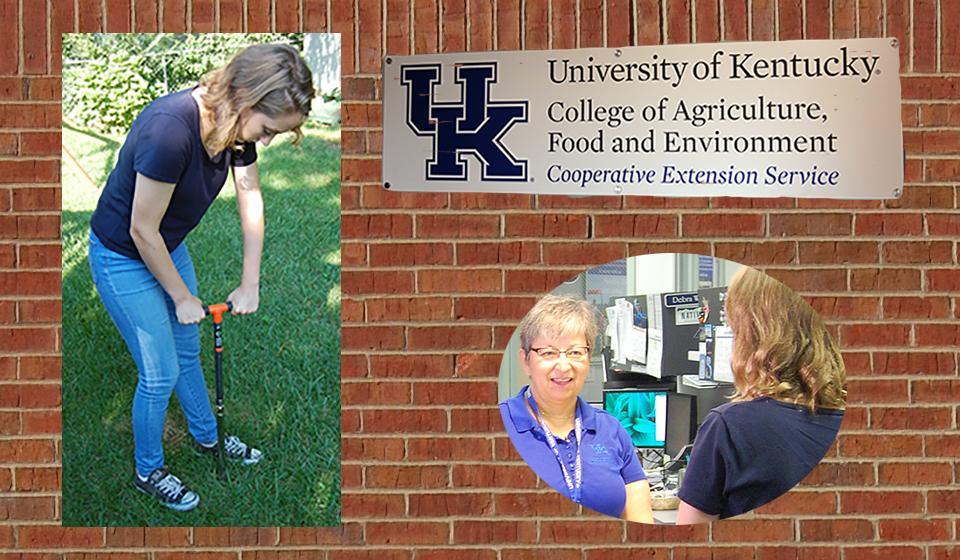
A soil test is a chemical analysis of your soil. The basic test provides information on the nutrients available to plants that are in your soil. Some plants, such as blueberries, are pH sensitive, and a soil test can help determine if your soil’s pH is appropriate for the particular crop you want to grow.
Soil samples are analyzed for important plant nutrients such as phosphorus (P), potassium (K), calcium (Ca), magnesium (Mg), and zinc (Zn). Soil test results help inform fertilizer recommendations for your lawn, garden, or flower beds and are made based on the type of plant you are growing and growing conditions.
The process to collect a soil sample for testing is outlined in the steps below.
Step 1 - Gather Sampling Materials
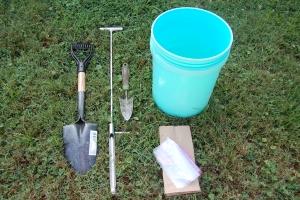 Grab a shovel/garden trowel or a soil probe (available for loanat many county Cooperative Extension Service offices), a clean dry bucket, a sharpie, and clean, spill-proof bags.
Grab a shovel/garden trowel or a soil probe (available for loanat many county Cooperative Extension Service offices), a clean dry bucket, a sharpie, and clean, spill-proof bags.
Step 2 - Identify Sampling Locations
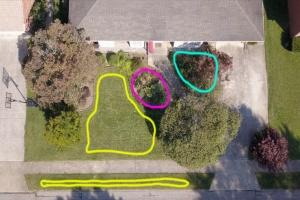
Identify areas of your lawn, vegetable garden, or flower beds with plants requiring specific soil conditions such as blueberries, azaleas, and rhododendrons. Look for different environments in your yard and collect separate samples from areas that are mostly sunny versus those in deep shade, or dry areas versus wet areas.
*Do not sample compost areas, under the dripline of trees, or near sidewalks and driveways.
Step 3 - Collect Samples
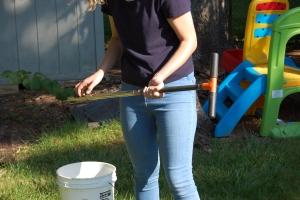
Work by area (e.g., lawn, vegetable garden, flower bed, etc.) and collect samples from 6-8 random locations within that area, keeping the soil from each area separate (i.e. in one bucket). Collect about 2 cups of soil for each area (e.g., lawn, vegetable garden, flower bed, etc.) that you sample. For example, in different locations in your vegetable garden, you would take eight separate, ¼ cup samples to make up a total of 2 cups of soil.
For lawns and untilled areas, insert your sampling instrument (soil probe or shovel/trowel) to a depth of about 4”. If using a shovel or trowel, move the blade back about an inch and again insert it into the soil. Collect soil from in-between your two shovel marks. For an area that has been tilled or turned, such as a vegetable garden, you will want to sample to a depth of 6" to 8". Remove turf, rocks, sticks, and plant debris from your sample and place debris-free soil in the bucket.
Step 4 - Mix Soil by Area
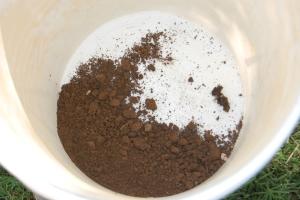
After collecting 6-8 soil samples for one area (e.g., lawn, vegetable garden, flower bed, etc.), mix the soil in the bucket by breaking up large clods. If the soil is wet and difficult to mix, allow it to air dry for a day or two. Once well mixed, remove a portion of the sample and place it in a labeled sample container (i.e., clean spill-proof bag).
Repeat the mixing step for each area sampled.
*Note: You may transport your samples in your container/containers and transfer them to soil test bags available at the County Extension office. You will need about 2 cups of soil to reach the "fill" line of the soil test bag.
Step 5 - Label your Samples
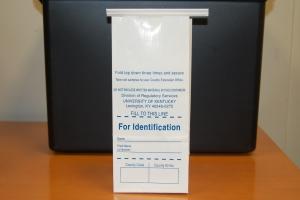
Label each soil test bag with your name and address and provide a unique 4-character name for each location. For example, if you collect a sample from your front yard (FY) you might choose FY01. A sample from your vegetable garden (VG) might be called VG01. Remember, each soil test bag is a mixture of 6-8 samples from one location on your property. The soil test bag, labeled with your unique code, is what you bring to your Cooperative Extension Agent. Note where each sample was collected, plant type grown (grass, perennials, annuals, evergreens, trees, or shrub) and growing conditions (shade or sun). This information is important to match nutrient recommendations with plant needs.
Deliver your soil samples to your county Cooperative Extension Service office. Cost varies by county but is usually less than $10 per sample. To find your county Cooperative Extension Service office visit the following University of Kentucky CAFE website page: http://extension.ca.uky.edu/county
Resources:
Taking Soils Samples for Horticulture Crops
AGR-16: Taking Soil Test Samples
